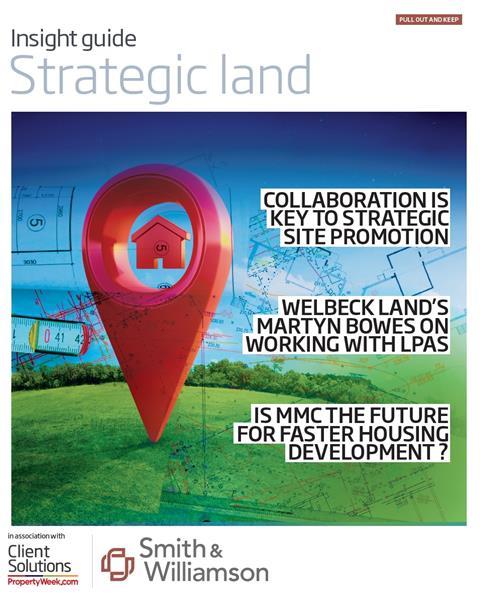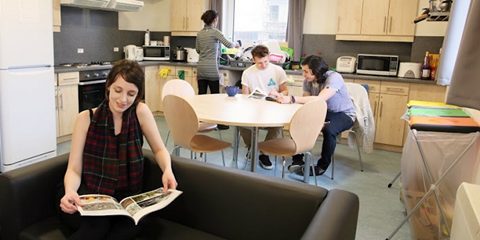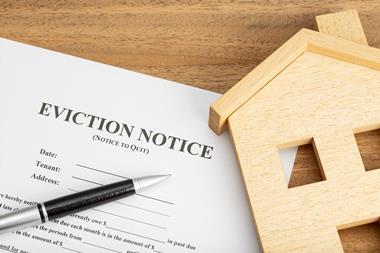At the beginning of the month, Property Week in association with Smith & Williamson brought together a panel of experts via Zoom to discuss the role of strategic land in the wider development industry. There was a particular focus on whether the Covid-19 pandemic would have a fundamental impact on where people want to live and the type of housing they view as desirable.
Panel of experts
- Jacqueline Oakes, partner, assurance and business services, and chair of the real estate group, Smith & Williamson LLP
- Leigh Johnson, head of master development and design, Homes England
- Ann Marie Aguilar, director of operations, Europe, International WELL Building Institute
- Tom Storey, director, Storey Consulting
- James Scott, director of planning and strategy, Urban & Civic
- Seb Loyn, director of planning and development, YTL Developments (UK)
- Adam Branson, freelance journalist, writer and editor, Property Week (chair)

Jacqueline Oakes: One thing lockdown has brought home to people is the importance of their environment for their overall wellbeing. We are absolutely seeing that come through in what the market is doing at the moment. There has been a shift in people’s priorities. They are looking for space to work in, looking away from London, and a sense of community has become more important. People have had to depend on their neighbours in a way that perhaps we have not thought about for a generation. Going forward, we need to think hard about what sorts of communities we want to build. Strategic land provides the opportunity to do things differently – to do something fit for our new way of living, concentrating on placemaking and wellbeing.

Find out more
Read the full Insight Guide on Strategic Land including features on LPAs, MMCs and strategic site promotion
James Scott: We have all experienced the pandemic. It has been the greatest shared experience since the Second World War. However, we have all looked at it through different prisms because we have either experienced it from the comfort of a Victorian house, a flat-share in multiple occupation where people live cheek by jowl or every shade in between. I think there will be different reactions in terms of house-buying decisions going forward. It is undoubtedly the case that people with families, who previously lived in metropolitan suburbs because of the need to be close to their primary place of work and therefore accepted tighter living conditions, are going to be looking at a world where they can work remotely for two to three days a week.

With the freedom from a daily commute, they will be able to live further away from their place of work, which brings with it greater choice. The truth is that Covid-19 has hit a digitally resilient decade. If it had hit 10 years ago, it would have reinforced the need to be close to offices and everything else. We are working on a presumption that there is a longer, structural change that has been brought about by the pandemic.
Leigh Johnson: I am not making light of this pandemic at all, but I think some positives will come out of it. People will look closely at what is important to them and how they want to live. Quite rightly, I think people will want more. It is not just about the bricks-and-mortar but also about what a space is like once you are through the door. I think that with strategic land, where there is a level of control, there will be a lot more emphasis on what the spaces are going to be like on these bigger sites. Obviously, the housing is incredibly important, but it is about what we build, how we build, where we build and why we build. There is the issue of the types of home we build and their flexibility and adaptability. On strategic sites there is a huge opportunity to think differently and truly be design- and landscape-led and think about the environment.
“On strategic sites there is a huge opportunity to think differently”
Leigh Johnson
JS: I think the big difference is that people will be spending more time where they live, but they will be careful about that choice. Cities are not dead – people will want to continue to live in metropolitan areas. I think that, actually, what we will see is an influx of young people without kids. I think what they will value is the concept of defensive space and not living cheek by jowl in flat shares. It is for the cities to respond to those challenges and become places that draw people back in. Previously, the charge against large-scale strategic sites was that they were empty during the day because people went to work elsewhere. Now, there will be a greater degree of activation locally – with demand follows innovation and supply. You have to help activate places.
Seb Loyn: I think there will be an exodus from London and other places will benefit. There is a really important role that we can play in ensuring the developments we deliver over the coming years have those dynamic uses. We have just received consent for the third-largest arena in the country for our masterplan at Brabazon in Bristol. That means from day one, we will be delivering diverse, mixed-use development. Certainly, the big strategic sites that I have lived on and seen evolve have always been a bit pedestrian and safe in terms of how they have delivered infrastructure. There is a real opportunity now for master developers to be creative. We have to create this constant activation. The stronger the community and culture early on, quite frankly, the better the values we will get on later phases.

Ann Marie Aguilar: Now more than ever as we emerge from the pandemic, we are seeing that people have learned to appreciate the value of their health. They are much more aware of the spaces around them and how they make them feel at a time like this. It is about really looking at how we can consider health and wellbeing across a masterplan and not just putting in a bicycle path. Do people have access to healthy food? How can we encourage outdoor exercise? We really need to think about the overall health of a resident as one of the primary aspects of any major development. It is also about going beyond what we have typically been doing and asking how we build emergency preparedness into masterplans, how we take care of senior people in our communities and how we consider social distancing if that comes back into play.
Tom Storey: My company works with a number of the big developers such as Sellar, Legal & General and Grosvenor, and we support them with all the socioeconomic aspects of their projects. That is about helping them secure planning and embedding all the things we have been talking about and weaving it into everything that they are doing. Mental health has become a huge issue for both the workforce and the community. Through digital twins, we can have greater levels of consultation with people – it gives them more ownership. The community engagement and ownership of the actual scheme itself become greatly enhanced if there is a level of engagement that is supported digitally. Young people are accessing things on their phones or tablets. We can weave wellbeing into the process through engagement with the community. They will see the benefit that development can bring to their lives. If you shape your thinking around happiness, it gives you a different perspective on the decisions you make. You need to deep-dive into a community to understand what the actual need is and then design something very bespoke to meet the actual need.

SL: It is important to do the engagement yourself. We have a major brownfield site at the moment – the former Filton Airfield in Bristol – that is surrounded by existing communities and I make a point at least twice a year of visiting all those parishes and talking to people, even if there is no planning application coming forward. We want to work outside the red line of our sites. You can only understand those things if you do the work yourself.
TS: I’m fortunate in that the projects I tend to work on are very large projects that tend to take a long time. The important role that I provide is to help the developers understand where there are pockets of best practice, where there are things that have worked elsewhere. The other thing is autonomy and control. It is about getting into the detail of the demographics and not about ticking boxes as part of the planning process. The technology piece on that is fundamental. That is how I think you get these improvements. It can be grounded in much larger numbers of people.
AMA: There is an interesting opportunity to engage not just with the local council but with the local GP and get an indication of the overall health of the community that you are about to step into. I have always thought that the health impact assessment is a real opportunity to display the uniqueness of the health of a specific area. Why can’t we have a better understanding of the overall health of a community, including equity and inclusion, and then try to target how a development will impact on some of the major health issues in a community?































No comments yet